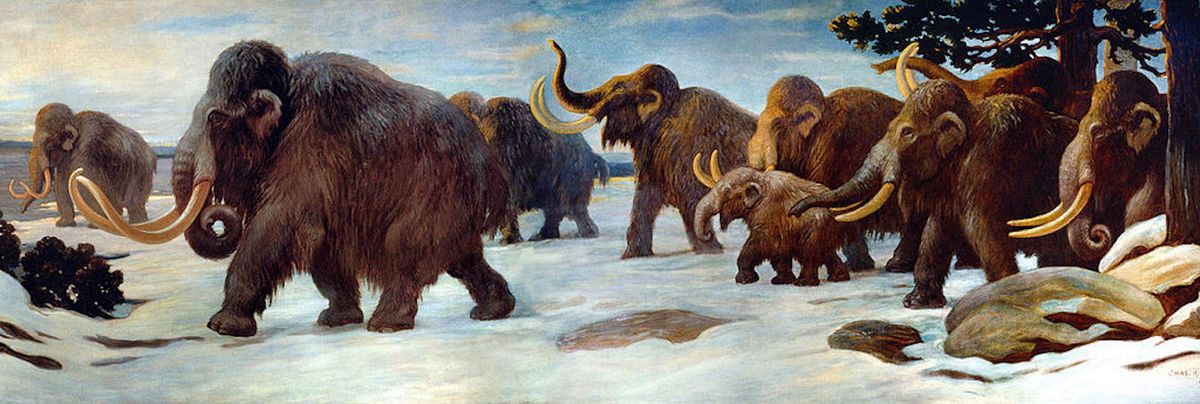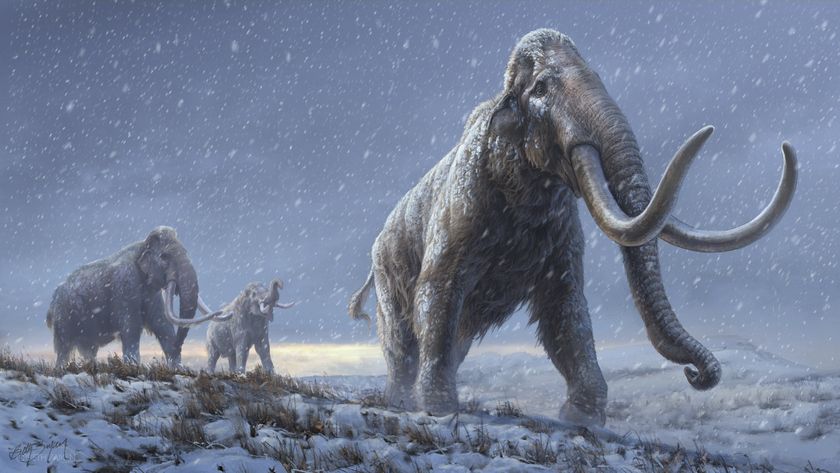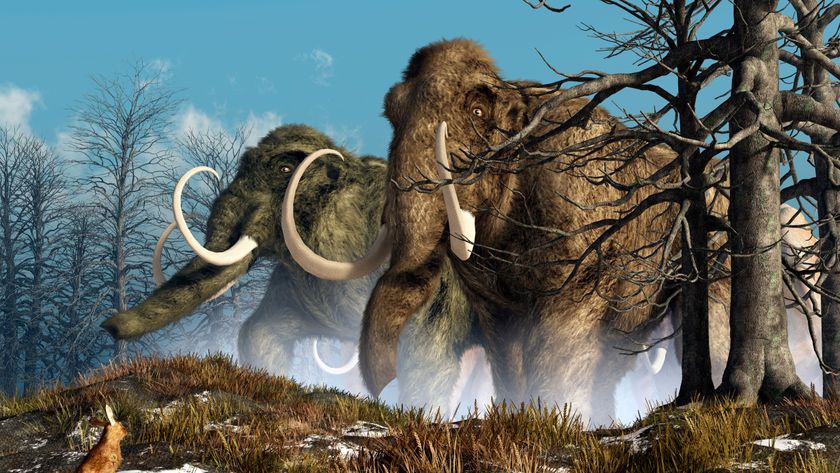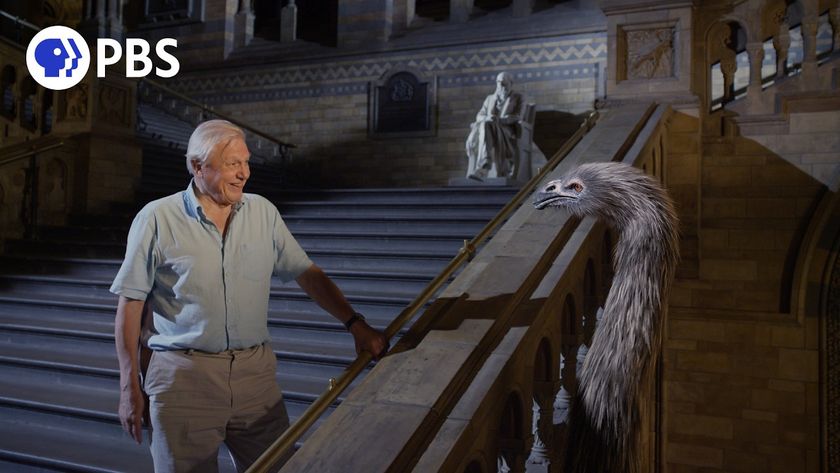DNA Mutations May Have Doomed the Woolly Mammoth

By the end of the ice age, the last remaining woolly mammoths had acquired so many genetic mutations that their numbers were practically guaranteed to spiral toward extinction, a new study has revealed.
Mammoths were once among the most common large herbivores that roamed across North America, Siberia and Beringia, a geographic area that once stretched from Siberia to the Canadian Yukon but is now mostly submerged under the Bering Strait. The giant beasts first appeared about 700,000 years ago. But, at the end of the last ice age, about 10,000 years ago, their population suddenly declined.
Scientists think a warming climate and the effects of human hunters led to the extinction of woolly mammoths on the mainland. Small populations continued to persist on isolated northern islands until they, too, vanished about 3,700 years ago. [Wipe Out: History's Most Mysterious Extinctions]
Researchers from the University of California, Berkeley, recently compared the existing genomes of two different mammoth specimens. One was a 45,000-year-old woolly mammoth found in northeastern Siberia, and the other was a 4,300-year-old mammoth from Wrangel Island, off the coast of Russia. The scientists found that the DNA of the Wrangel Island mammoth, which represents the last members of the species, had multiple harmful mutations that would have interfered with normal functions and compounded the difficulties of survival.
"It's sort of like a Greek tragedy that's written into the DNA of the poor mammoth," said lead study author Rebekah Rogers, an evolutionary geneticist at the University of North Carolina in Charlotte. "You look at this mammoth's DNA and you see all these bad mutations."
The findings suggest that in the end, as sea levels rose and cut off Wrangel Island mammoths, their small population and resulting inbreeding would have rendered the process of natural selection ineffective.
In larger populations, mutations that occur naturally are weeded out by competition, Rogers said. But with such a small population, there would have been no mechanism to prevent these mutations from being passed on to the next generation of mammoths. As such, harmful changes in the mammoth genome that deleted large chunks of DNA, or messed up how genes were read and translated, would have accumulated, according to Rogers.
Sign up for the Live Science daily newsletter now
Get the world’s most fascinating discoveries delivered straight to your inbox.
By looking at which genes were affected by these harmful mutations, Rogers and her colleague, Montgomery Slatkin, a population geneticist at the University of California, Berkeley, were able to guess what functions or behaviors might have been affected as mammoth populations dwindled. The animals probably lost many olfactory receptors, which detect odors, as well as urinary proteins, the researchers found. This could have affected their social status and mate choice, Rogers said. The genome also revealed that the island mammoth had certain mutations that likely created an unusual translucent satin coat, as well as several other mutations with effects that scientists don't fully understand yet.
While the researchers said that their analysis was limited to one individual from the Wrangel Island mammoth population, they said they were fairly certain that this "genetic meltdown" would have occurred in the remaining mammoths as well.
"We would expect that if you got another mammoth from the island and you looked at its genome, that it would also have an excess of bad mutations," Rogers told Live Science. "They might not be the exact same mutations — some of them would be shared, and some of them might be different — but we would expect the same pattern." [Photos: 6 Extinct Animals That Could Be Brought Back to Life]
Other biologists agreed that the findings support a long-standing theory that genomes start unraveling as animal populations decline.
"It makes sense that the researchers would find an accumulation of deleterious mutations in a population that was very small," said Beth Shapiro, an evolutionary biologist at the University of California, Santa Cruz, who was not involved in the new study. "[This] reveals that it's not necessarily just a small population size that is potentially dangerous for populations but also the content of those genomes that's important."
The study offers a warning to conservationists, Shapiro said. If bad mutations start accumulating in small groups of isolated animals, it might not be sufficient to try and preserve endangered species after they have already undergone generations of inbreeding and genomic meltdown. Conservationists probably need to intervene much sooner, she said.
It might also provide an interesting twist to mammoth "de-extinction" experiments. If some mammoth genomes carry an overabundance of negative mutations, researchers need to carefully screen the genes before they are inserted into mammoth-elephant hybrid genomes, Rogers said. In fact, screening the mutations and testing what their functions are could also inform scientists about how the mutated genes affected mammoths just before they went extinct, she added.
Rogers and her colleagues detailed their analysis of the mammoth's genetic mutations in a study published online today (March 2) in the journal PLOS Genetics.
Original article on Live Science.



